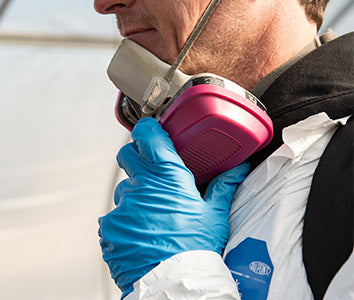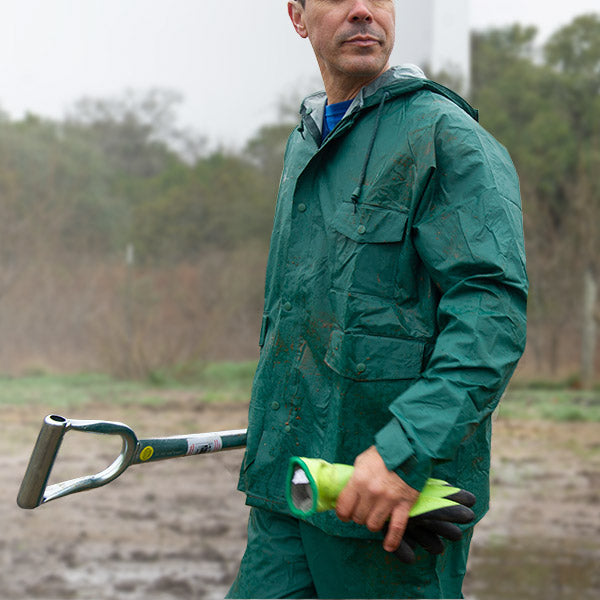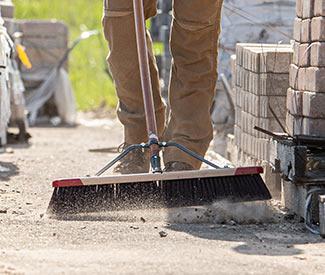Measuring wind speed and direction is important for avoiding the problems caused by spraying in high winds, including drift and poor coverage when applying pesticides. Spray drift is the movement of pesticides away from the targeted area being sprayed. The drift from pesticide applications can expose people, wildlife and the environment to chemicals that can cause health problems.
About Spray Drift
What is pesticide spray drift?
Pesticide spray drift is the movement of pesticides away from the target area. Whether you do your own spraying or have a custom applicator do it for you, it's important to pay close attention to drift and to understand the serious problems it can cause. Pesticide spray drift is expensive, dangerous and illegal. It can result in increased insurance premiums, wasted product, increased production costs, claims, costly legal fees, fines from government inspectors, and the loss of "goodwill" among your neighbors. The single most important step a grower can take to avoid pesticide drift is to make sure all ground and aerial applicators are skilled, careful and well-trained.
What environmental conditions contribute to drift?
Environmental conditions can be one of the factors contributing to pesticide spray drift. Wind speed and direction and the distance to neighboring crops or other sensitive areas can cause drift conditions. High wind speeds can carry pesticide particles out of the target area, while high temperature and low relative humidity decrease particle size and increase drift potential.
What are sensitive off-target areas?
Sensitive off-target areas are areas outside of the field where you do not want to spray. These may include neighboring crops, homes, schools, day care centers, livestock feeding and watering sites, areas with grazing animals, surface water, roads or walkways, nurseries, greenhouses, areas prone to runoff, and/or areas planted with food crops. Sensitive off-target areas should always be separated from spray areas by a buffer.
Wind, Spraying and Droplet Size
When is it too windy to spray?
Spraying when it is too windy or when the wind is blowing toward a sensitive off-target area can cause serious problems. Unfortunately, there is no "magic bullet" that tells a person when it is too windy to spray. This is where having a skilled, well-trained applicator and monitoring conditions come into play. Be sure to check the wind speed and direction to ensure they are within the recommendations on the pesticide label. NOTE: It's important that wind direction always be checked, even at very low wind speeds. A buffer should always be left between the spray application and sensitive off-target areas to allow for some drift downwind into the buffer.
How does spray droplet size affect drift?
Droplets need to be small enough to cover the area, but not so small that the drift potential increases. When given a choice, always choose larger drops within the range that will give complete control as specified on the pesticide label. You can avoid droplets that are too small by choosing appropriate nozzle types and/or orifice (opening) size; by adding recommended adjuvants to increase viscosity; by running your sprayer at the lowest recommended pressure; and by avoiding high temperature conditions that can cause droplets to evaporate in mid-air, thus becoming smaller in the process.
What is the proper sprayer height?
It is important that the height of your sprayer is adjusted properly. The greater the distance between your spray nozzles and target foliage, the greater the opportunity for air movement to carry droplets away. Wind speeds are higher with increasing height above the ground, so any increase in height causes an even greater increase in drift distance. In some cases, the pesticide label may give recommended heights. Otherwise, spray as close as possible to reduce drift but far enough away to still get proper coverage.
Importance of Record Keeping
Why keep written records?
Be sure to keep accurate, written records so you can find exactly what was done the last time you or your applicator sprayed or in case you are ever accused of pesticide drift. Your records should include what state, federal, and/or local laws require. In addition, here are some items that are a good idea to include that may or may not be required by law:
- The date (of the pesticide spray)
- Accurate start and end times
- Weather conditions, including temperature, humidity, wind speed and direction
- Materials and amounts applied (including adjuvants)
- Target pests
Also, be sure to keep maintenance records (including the dates of calibration, and nozzle and tip replacement) on all spray and weather monitoring equipment that is used. Reminder: Minimizing spray drift should be a team effort between the manager, customer and the skilled applicator in the field. Good communication and ongoing training are critical elements in effectively minimizing drift.




